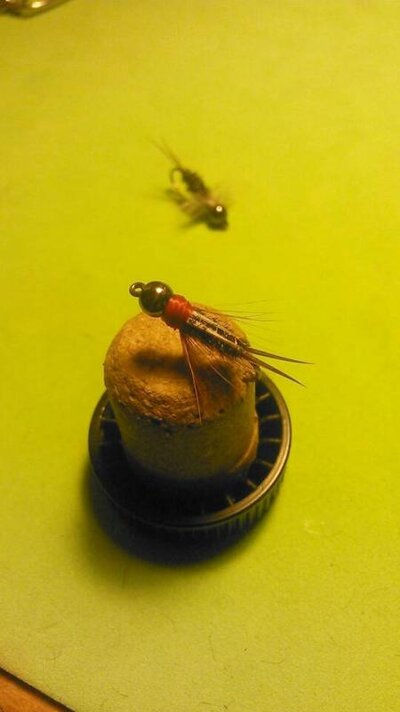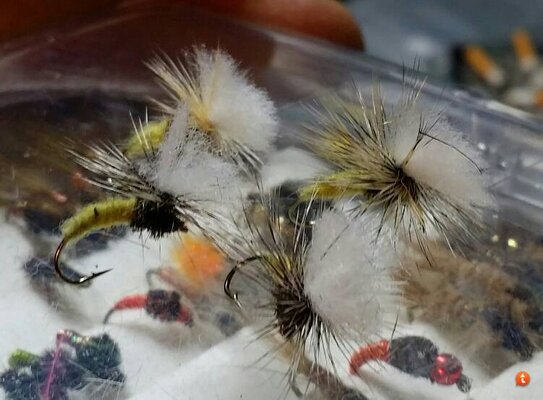You are using an out of date browser. It may not display this or other websites correctly.
You should upgrade or use an alternative browser.
You should upgrade or use an alternative browser.
Fly tying and patterns sharing thread
S
steelhead_slayer
Well-known member
Looks good. It gets easier and easier
R
Rusty Stern
0
steelhead_slayer said:When I first started using them I tired them one at a time and with really tight wraps. You can even put a drop of glue or hardener down to make sure they stay
I use a sticky thread wax to hold them. Sometimes the thread base will create a slick surface and things get pulled around the hook shank when you tighten down. A little wax and a pinch wrap does the trick.
B
bigboy70
0
What's that tail material
R
Rusty Stern
0
Brown antron yarn.
B
bigboy70
0
Antron ok thanks just a question cause imma noob to this but isn't that representing the shuck?
R
Rusty Stern
0
That's correct. I'm a noob as well. I tie a lot. Almost everyday. Nothing like catching a fish on your own fly.
B
bigboy70
0
Ok next question why would you put a shuck on spinner which is a sexually mature mayfly thats laying/dying or was this just to do something different just watched a really good video of a mayflys life cycle really informative
R
Rusty Stern
0
Ah.... The sparkle dunn is an emerging mayfly. Not a mature spinner. It rides in the surface film with only the parachute visible above water. Like an emerged getting ready to drop it's shuck and fly off.
B
bigboy70
0
Ok guess they seem really similar
B
bigboy70
0
Nicely done sir season coming! Winters,springers, summers and trout in between whoo
brandon4455
Well-known member
A few select trout streams open before may.... gotta get some big hopper dropper stonefly dries ready. This one will float a #12 nymph with a tungsten beadhead, but when the fish come up for the dry they seem to have trouble fitting the fly in their mouth :lol: still works, though. posted it on ifish for the fly tying contest last year, this ones always in my trout box now.I made the one pictured with makeshift materials, got better colors and legs now..ill post a fresh pic when i return from the east side of the state
J
jimmy
0
Over a year since a pattern?!? Gotta fix that....
easy little fly with a couple little tying tricks:
Simple Green Stonefly, no rib, no hackle. Just a nice profile meant to tumble through turbulence like the real ones do.
Size 6 long nymph hook, bead, biots, peacock hurl, and rubber legs.
(sorry about the focus, this is what it looks like when I tie without glasses. I'm sure you can figure out what I'm doing)
pop a bead on the hook, slide it back to the bend. Tie on two turkey biots for antennae/legs, tie off thread, slide bead back over the thread:
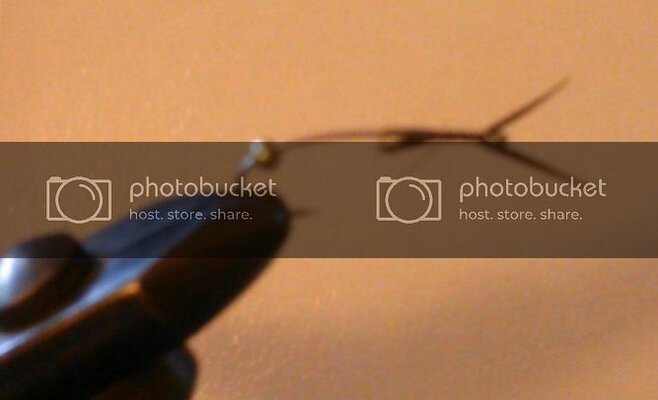
add two more biots for the split tail, and a few wraps of lead wire to weight, wrap with thread to even out the profile:
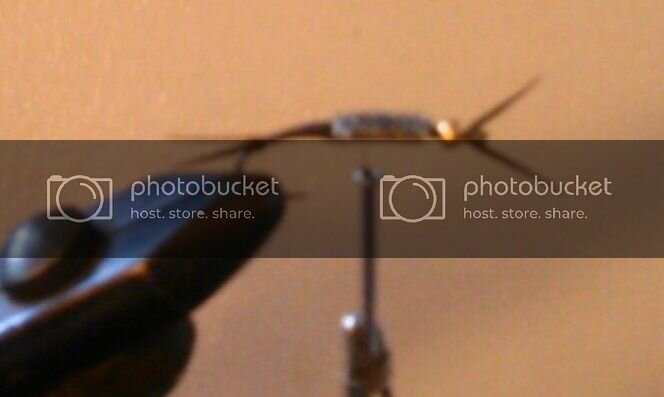
start at tail adding pecock hurl twisted to chenille, about half way up stop and add a couple rubber legs, continue with peacock dividing legs with the wraps for a natural spacing:
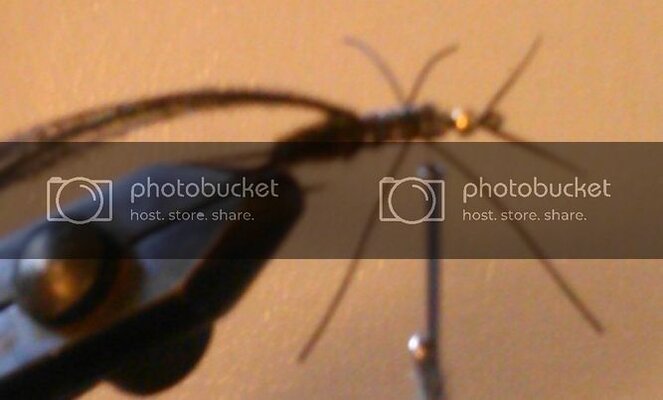
when you get to the neck slide on a small piece of split drinking straw to get those legs out of your way and add two more biots (prince nymph style) for a simple shell back:
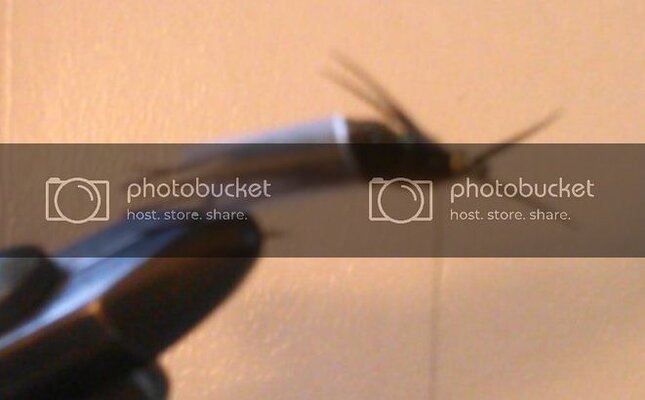
whip finish. Keep profile and leg spacing in mind when wrapping the peacock, that's the whole jist of the nymph.
finished:
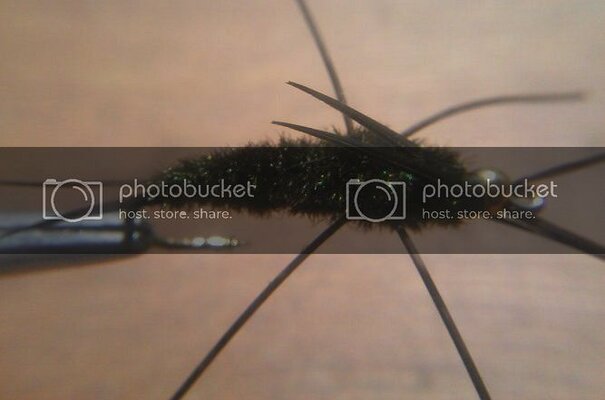
~Jimmy~
easy little fly with a couple little tying tricks:
Simple Green Stonefly, no rib, no hackle. Just a nice profile meant to tumble through turbulence like the real ones do.
Size 6 long nymph hook, bead, biots, peacock hurl, and rubber legs.
(sorry about the focus, this is what it looks like when I tie without glasses. I'm sure you can figure out what I'm doing)
pop a bead on the hook, slide it back to the bend. Tie on two turkey biots for antennae/legs, tie off thread, slide bead back over the thread:

add two more biots for the split tail, and a few wraps of lead wire to weight, wrap with thread to even out the profile:

start at tail adding pecock hurl twisted to chenille, about half way up stop and add a couple rubber legs, continue with peacock dividing legs with the wraps for a natural spacing:

when you get to the neck slide on a small piece of split drinking straw to get those legs out of your way and add two more biots (prince nymph style) for a simple shell back:

whip finish. Keep profile and leg spacing in mind when wrapping the peacock, that's the whole jist of the nymph.
finished:

~Jimmy~
B
bigboy70
0
Oh man I dig it
P
playhooky
0
Nice Stone....thanks for the tying tutorial.
Sent from my iPad using Tapatalk
Sent from my iPad using Tapatalk
P
playhooky
0
brandon4455 said:A few select trout streams open before may.... gotta get some big hopper dropper stonefly dries ready. This one will float a #12 nymph with a tungsten beadhead, but when the fish come up for the dry they seem to have trouble fitting the fly in their mouth :lol: still works, though. posted it on ifish for the fly tying contest last year, this ones always in my trout box now.I made the one pictured with makeshift materials, got better colors and legs now..ill post a fresh pic when i return from the east side of the state
Nice bug Brandon. I'm always looking for new patterns that will stay on top for my indicator. I'd rather fish an indicator with a hook in it than yarn or a thingamabobber. I've been adding to my boxes also. Cheers!
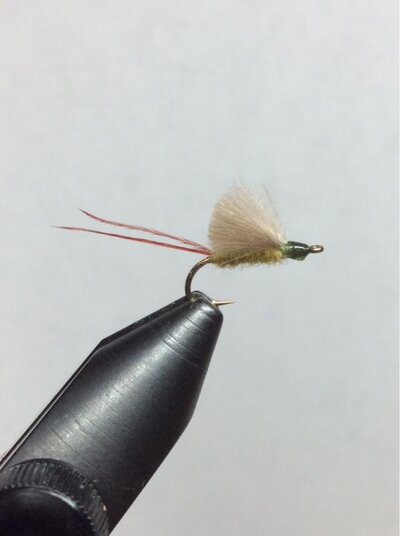

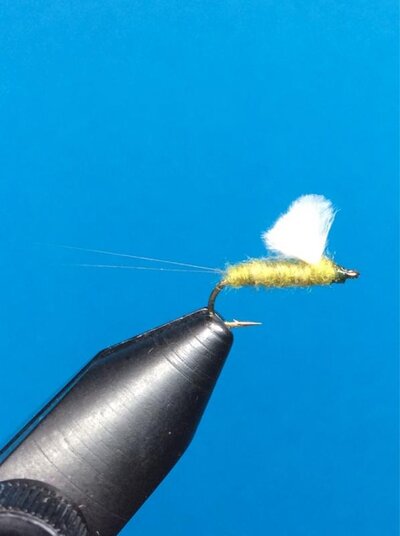
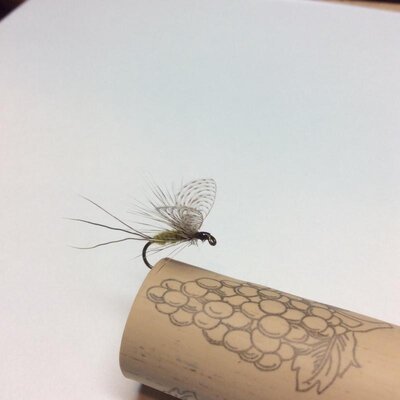
Sent from my iPad using Tapatalk
B
BlueSkye
0
Very cool work bigsteel!
Similar threads
- Replies
- 11
- Views
- 1K
Hunter Cords
- Replies
- 0
- Views
- 175
Senkosam
Share:
